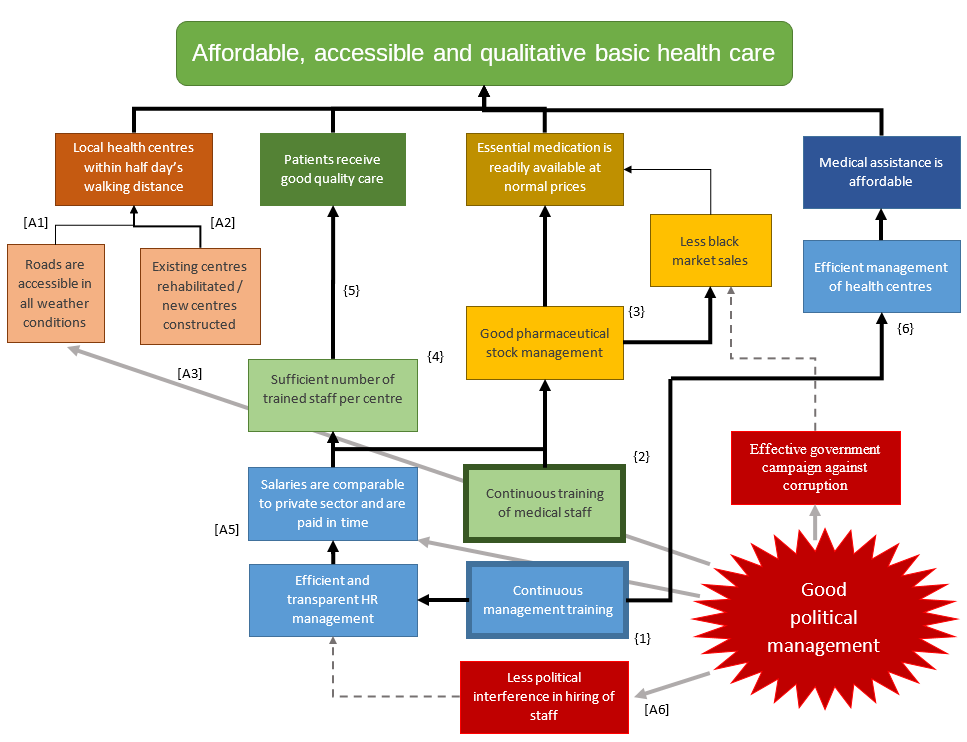C] Identify possible interventions/activities
Once all the outcomes and their relations have been identified, you can reflect on what activities, approaches or interventions are needed to achieve each outcome. At this stage it is more about the type of activity or intervention; there is no need to go into detailed planning of interventions yet.
However it is important to get to clearly defined outcomes at this stage:
- What does success look like? On what scale will you be working (national, regional, local)? You have to specify the range and scope. Success may have a material form, but more often than not it is a question of people. This means that success may not be physically tangible but that it may be a question of changed behaviours, attitudes, beliefs, values, etc.
- Who is the target population? Whose situation will change when this outcome is achieved? Who will benefit from the intervention(s)? Who are the key constituents?
- What is the expected timeframe? This depends on the time it will take to for the intervention to achieve the desired change, but also on the relation between each outcome and possible others. It may well be that other outcomes must be achieved before this one.
- What amount of change is necessary for success? More often than not this is not a simple yes/no or all-or-nothing answer. If the desired outcome is that the women of a region or country are literate (with the goal of reducing discrimination against women for instance), how many women have to be trained before you have a critical mass that is sufficiently large to speak of success (and sustainability)? Ten women is clearly not enough, but even in the most developed nations there is never 100% literacy. Here the reflection is not so much about numbers (that is what indicators are for and we’ll get back to that) but more about how the (durable) change will look like that a programme should be able to achieve.
This process will give you a first version of a diagram or map with the outcomes, activities and their relations. As explained before you’ll have to go through several cycles of refinement, revision and adaptation with different stakeholders to get to a final version.

In the ToC example above, the contribution of the organisation to the overall change process is marked with the thick black arrows. In the middle, the main intervention strategies are in the boxes with the thick edges: 'Continuous training of medical staff' and 'Continuous management' training respectively. The main assumption here is 'Good political management' which will have to reduce political meddling in nominations of doctors and other medical staff and create a real motivation to work on infrastructure, fight corruption and so on. This assumption must be elaborated and clarified in the next step.
The main purpose of this diagram is that it provides a good and understandable overview of your Theory of Change. You can use all kinds of visual aids (colours, pictograms, arrows…) to accomplish this. And yes, in some cases your ToC will resemble a certain figure and you can emphasise this and release your inner creative person. But don’t force it, don’t make the message secondary to the artwork and don’t simplify too much or modify the content to fit into your beautiful artwork.
In your narrative document, it’s important to explain the rationale of your ToC: why are the different outcomes needed to achieve the overall goal and why will the different interventions lead to the achievement of the outcomes and final goal(s)?





Add new comment